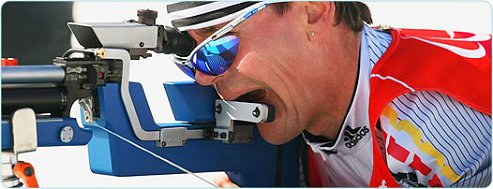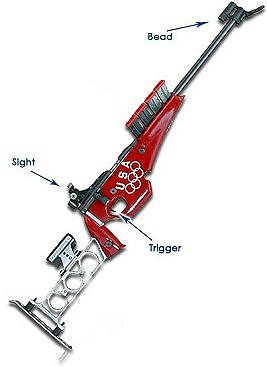
Paralympics Biathlon. Disabled skiing and shooting. A Most Demanding Sport
“Adversity cause some men to break; others to break records.”
William A. WardParalympics Biathlon. The sport of cross-country skiing is a tough aerobic workout. Step into the boots, slip the boots into the bindings and take off skiing. Ahhh. It sounds so easy to do.
In real life, after a few pushes and slides your heart rate soars, your lungs desperately try to produce the oxygen you need, in a moment you begin to sweat. Now try to keep this up for a few kilometers with a 7 pound rifle on your back. Oh yes, did I mention the fact that you must stop occasionally, flop on your belly, bring your rifle around, sight a tiny target, try to control your now shaking body as it deals with a heart that is now pounding in your chest, and hit your target. That is the sport of Biathlon.
The sport was introduced in the Paralympics of 1988 in Innsbruck, Austria with great success.
Paralympics Biathlon athletes combine cross-country skiing with rifle shooting. Paralympic skiers shoot from the prone position differing from the Olympics biathlon skiers.
The athletes ski a 2.5 kilometer loop three times. Each loop requires the skier to stop twice and take five shots at a metal target with five plates located 10 meters away. The bulls eye is only 15 mm which is just over one half an inch in diameter. The penalty for a miss is the skier must ski a 150 meter loop for each miss.
What of the visually impaired? How do they compete?
In 2002 at the Salt Lake Paralympics Biathlon games a wonderful new device was introduced successfully. The visually impaired shooter can hear different tones when the rifle is aimed exactly at the bulls eye target.
In the long distance event, the athletes must go around the loop five times stopping four times on each loop to shoot. For every miss a one minute penalty is added to the skiers time.
The biathlon races use a staggered start of 30 seconds and the same handicap system as used in the cross-country skiing is used to equalize the skiers. The extra times area added to the skiers and the lowest calibrated time wins.
 |
Various harnesses are adapted for use by the athletes depending upon their disability. In essence the rifle is carried on the back with a harness that allows for a quick release. The rifle has a flip cover over the muzzle to keep out snow. There is a stability harness the shooter will use to steady the rifle while aiming and shooting. The rifle has ammunition clips holding five regulation .22 caliber bullets. They are stored up forward on the stock for quick and rapid use. The rifles must be single shot. For the relay races, the athlete stores three extra rounds in the rifle stock in case they are needed.
The bulls eye targets are round metal discs. When hit a different colored disk flips to show a successful hit. The computer connected to the target keep score electronically.
The sport of Paralympics Biathlon is possibly one of the toughest to master.
Wheelchair Curling is a sport where strategy takes over.
Return from Paralympic Biathlon to Whistler Outdoors



